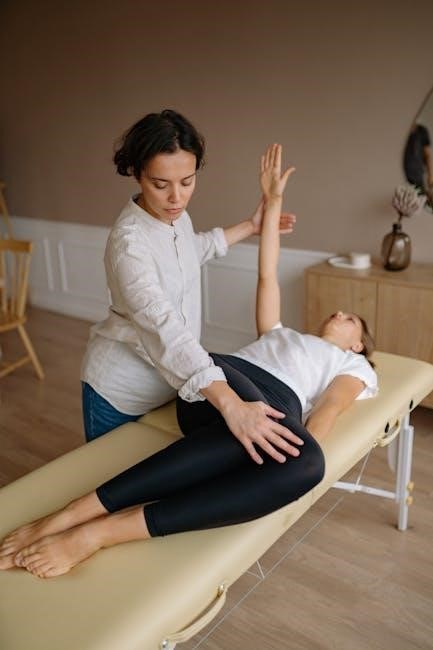Voice Exercises in Speech Therapy: An Overview
Voice exercises form the cornerstone of speech therapy, designed to rehabilitate and optimize vocal function. These exercises encompass a variety of techniques, from vocal function exercises to breathing techniques. Speech-language pathologists guide individuals through tailored programs to address specific needs.
Voice therapy is a specialized field within speech-language pathology focused on evaluating and treating voice disorders. These disorders can arise from various causes, including vocal cord dysfunction, muscle tension, or neurological conditions like Parkinson’s disease. Therapy aims to improve vocal quality, strength, and stamina through targeted exercises and techniques. A speech-language pathologist (SLP) plays a crucial role in assessing the individual’s vocal capabilities and developing a personalized treatment plan. This plan often incorporates vocal function exercises (VFEs), breathing exercises, and articulation drills to enhance vocal cord function and overall communication effectiveness. The ultimate goal is to restore healthy voice production and improve the individual’s ability to communicate confidently and effectively in daily life.

Understanding Vocal Function Exercises (VFEs)
Vocal Function Exercises (VFEs) are a systematic approach to voice rehabilitation. They aim to strengthen and coordinate laryngeal muscles, improving airflow and vocal fold vibration. VFEs are like physical therapy for the voice.
The Purpose of VFEs
The primary purpose of Vocal Function Exercises (VFEs) is to restore healthy vocal function by strengthening and coordinating the muscles of the larynx. VFEs improve the relationship between airflow, vocal fold vibration, and supraglottic treatment of phonation. These exercises are specifically designed to address vocal weakness, tension, or imbalance, facilitating a return to efficient and effortless voice production. VFEs can also modify pitch and volume. By targeting specific aspects of vocal technique, VFEs aim to enhance vocal quality, endurance, and overall vocal health. The goal is to achieve a balanced and sustainable voice for various communication needs.
Components of VFEs
Vocal Function Exercises (VFEs) typically consist of a structured series of four key exercises designed to target different aspects of vocal production. These commonly include a warm-up, pitch glides, sustained vowel phonation, and production of specific words or phrases. The warm-up exercise prepares the vocal folds for activity, while pitch glides help to improve vocal flexibility and range. Sustained vowel phonation focuses on breath control and consistent vocal fold vibration. Specific sounds used in training are specific, and correct production is encouraged to strengthen and balance muscles of the voice and improve the relationship between airflow, vocal fold vibration and tone. These components work together to enhance vocal strength, coordination, and efficiency.
Semi-Occluded Vocal Tract (SOVT) Exercises
Semi-Occluded Vocal Tract (SOVT) exercises involve partially obstructing the vocal tract to improve vocal efficiency and resonance. These exercises balance the voice and help achieve a relaxed voice placement, often using tools or techniques.
Benefits of SOVT Exercises
SOVT exercises offer numerous benefits, improving vocal strength, quality, and tone. They promote efficient vocal fold vibration, leading to a more balanced and resonant voice. SOVT exercises are particularly useful for individuals seeking to reduce vocal strain and improve vocal endurance. These techniques also facilitate a relaxed and open vocal tract, encouraging ease of phonation.
By partially occluding the vocal tract, SOVT exercises create back pressure that supports vocal fold closure. This can be incredibly helpful for those with vocal fatigue, nodules, or other voice disorders. Regular practice can lead to increased vocal confidence and projection.
Breathing Techniques in Voice Therapy
Breathing techniques are vital in voice therapy, supporting vocal production. Diaphragmatic breathing enhances breath control and reduces tension. These exercises improve vocal loudness, clarity, and overall vocal efficiency, promoting healthy voicing habits.
Diaphragmatic Breathing
Diaphragmatic breathing, also known as abdominal breathing, is a foundational technique in voice therapy. It involves using the diaphragm muscle, located at the base of the lungs, to draw air deeply into the abdomen. This technique promotes efficient breath support for vocalization, reducing strain on the vocal cords and surrounding muscles. By engaging the diaphragm, individuals can achieve greater breath control, increased vocal endurance, and improved vocal quality. Proper diaphragmatic breathing also aids in relaxation, further enhancing vocal performance and minimizing tension that can contribute to voice disorders. Practicing this technique consistently can significantly benefit overall vocal health and projection.

Voice Therapy for Specific Conditions
Voice therapy plays a crucial role in managing voice disorders associated with specific conditions like Parkinson’s disease and spasmodic dysphonia. Tailored exercises and techniques address the unique vocal challenges presented by each condition, improving vocal function.
Parkinson’s Disease and Voice Therapy (LSVT)
For individuals with Parkinson’s disease, voice therapy, particularly the Lee Silverman Voice Treatment (LSVT), offers significant benefits. LSVT focuses on improving vocal loudness and speech clarity. This evidence-based program utilizes exercises designed to increase vocal effort and sensory awareness. LSVT aims to recalibrate the patient’s perception of their own voice volume, encouraging them to speak louder.
The program involves intensive, high-effort vocal exercises and activities. By consistently practicing these techniques, individuals with Parkinson’s disease can experience improved communication and quality of life. LSVT helps combat the common speech difficulties associated with the condition.
Spasmodic Dysphonia and Voice Therapy
Spasmodic dysphonia, a neurological voice disorder, can be addressed with targeted voice therapy techniques. These exercises aim to reduce vocal strain and improve voice quality. Therapy may involve massage, breathing exercises, and techniques such as trilling and blowing. The goal is to manage the involuntary muscle spasms that characterize the condition.
A speech-language pathologist can guide individuals through exercises that promote relaxation and control of the vocal cords. Techniques to facilitate smoother vocal onset and reduce vocal effort are often incorporated. While a cure is not always possible, therapy can significantly improve communication abilities. Dysphonia International provides resources for those affected.

Articulation Exercises
Articulation exercises play a crucial role in speech therapy by targeting the precise movements of the mouth, tongue, and jaw needed for clear speech. These exercises aim to improve the accuracy and coordination of these articulators, addressing difficulties in producing specific sounds or sound combinations. Therapists often use repetitive drills, visual aids, and tactile cues to guide patients.
Exercises may focus on strengthening muscles, improving range of motion, and refining motor control. Common techniques include tongue twisters, minimal pair drills, and repetition of target sounds in various contexts; Tailored programs address individual needs, helping to overcome challenges such as lisps, distortions, or substitutions. The ultimate goal is to enhance speech intelligibility.

Resources for Voice Therapy Exercises (PDFs and Online)
Numerous resources exist for voice therapy exercises, including downloadable PDFs and online video demonstrations. These materials provide guidance and support for individuals seeking to improve their vocal health and speech clarity with accessible and practical tools.
Availability of PDF Handouts
PDF handouts offering structured voice therapy exercises are widely available online, providing accessible resources for both therapists and patients. These handouts often contain detailed instructions, illustrations, and examples of exercises targeting various aspects of vocal function, such as breath control, resonance, and articulation. Many organizations, clinics, and individual speech-language pathologists offer these resources for free or at a nominal cost. These PDFs can be an invaluable tool for individuals seeking to supplement their therapy sessions or practice independently. They provide a convenient and easily accessible way to reinforce learned techniques and track progress, enhancing the effectiveness of voice therapy interventions.
Online Video Resources
Numerous online video resources are available, showcasing voice therapy exercises demonstrated by speech-language pathologists and voice coaches. These videos offer visual guidance, allowing individuals to observe proper techniques and form. Platforms like YouTube host a wealth of content, ranging from introductory tutorials to specialized exercise routines. These resources can be beneficial for individuals seeking clarification on exercise performance or looking for new exercises to incorporate into their therapy. Many videos include helpful tips and modifications, making them accessible to a wide range of users. However, it is essential to consult with a qualified professional to ensure that the exercises are appropriate for your specific needs and condition.
The Role of a Speech-Language Pathologist
Speech-Language Pathologists (SLPs) play a crucial role in voice therapy, providing expert assessment, diagnosis, and treatment of voice disorders. They tailor exercise programs to individual needs, considering the underlying cause of the voice problem and the client’s specific goals. SLPs guide patients through exercises, ensuring correct technique and providing feedback. They also educate patients on vocal hygiene and strategies for preventing further voice issues. Their expertise is vital for maximizing treatment outcomes and improving overall vocal health. Furthermore, they adapt therapy as needed, monitoring progress and modifying exercises to achieve optimal results. A qualified SLP is essential for safe and effective voice rehabilitation.
